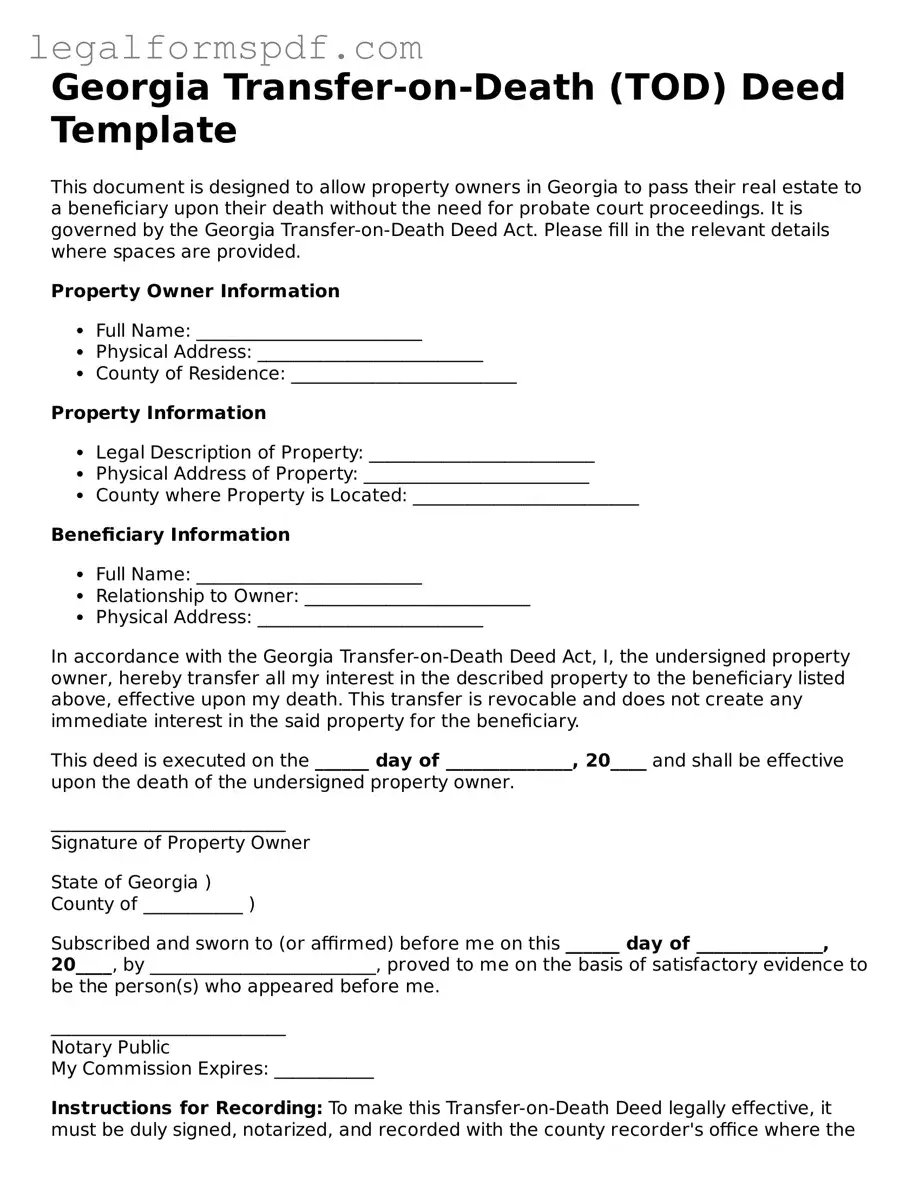Georgia Transfer-on-Death (TOD) Deed Template
This document is designed to allow property owners in Georgia to pass their real estate to a beneficiary upon their death without the need for probate court proceedings. It is governed by the Georgia Transfer-on-Death Deed Act. Please fill in the relevant details where spaces are provided.
Property Owner Information
- Full Name: _________________________
- Physical Address: _________________________
- County of Residence: _________________________
Property Information
- Legal Description of Property: _________________________
- Physical Address of Property: _________________________
- County where Property is Located: _________________________
Beneficiary Information
- Full Name: _________________________
- Relationship to Owner: _________________________
- Physical Address: _________________________
In accordance with the Georgia Transfer-on-Death Deed Act, I, the undersigned property owner, hereby transfer all my interest in the described property to the beneficiary listed above, effective upon my death. This transfer is revocable and does not create any immediate interest in the said property for the beneficiary.
This deed is executed on the ______ day of ______________, 20____ and shall be effective upon the death of the undersigned property owner.
__________________________
Signature of Property Owner
State of Georgia )
County of ___________ )
Subscribed and sworn to (or affirmed) before me on this ______ day of ______________, 20____, by _________________________, proved to me on the basis of satisfactory evidence to be the person(s) who appeared before me.
__________________________
Notary Public
My Commission Expires: ___________
Instructions for Recording: To make this Transfer-on-Death Deed legally effective, it must be duly signed, notarized, and recorded with the county recorder's office where the property is located before the property owner's death.
Revocation: The property owner may revoke this Transfer-on-Death Deed at any time before death by executing a new deed or a revocation form.
